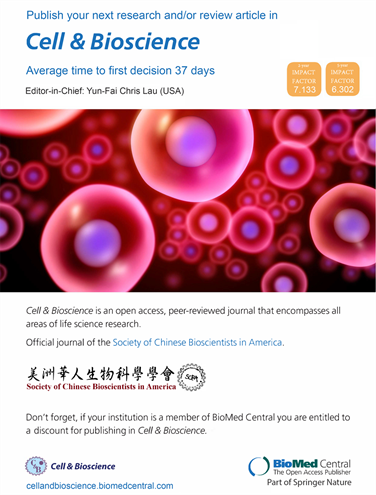Med1 inhibits ferroptosis and alleviates liver injury in acute liver failure via Nrf2 activation
IF 6.1
2区 生物学
Q1 BIOCHEMISTRY & MOLECULAR BIOLOGY
引用次数: 0
Abstract
Extensive hepatocyte mortality and the absence of specific medical therapy significantly contribute to the unfavorable prognosis of acute liver failure (ALF). Ferroptosis is a crucial form of cell death involved in ALF. In this study, we aimed to determine the impact of Mediator complex subunit 1 (Med1) on ferroptosis and its potential hepatoprotective effects in ALF. Med1 expression is diminished in the liver of lipopolysaccharide (LPS)/D-galactosamine (D-GalN)-induced ALF mice, as well as in hepatocytes damaged by H2O2 or TNF-α/D-GalN in vitro. Med1 overexpression mitigates liver injury and decreases the mortality rate of ALF mice by ferroptosis inhibition. The mechanism by which Med1 inhibits erastin-induced ferroptosis in hepatocytes involves the upregulation of nuclear factor erythroid 2-related factor 2 (Nrf2) and its downstream antioxidant genes heme oxygenase-1 (HO-1), glutamate cysteine ligase catalytic (GCLC), and NAD(P)H quinone oxidoreductase 1 (NQO1). Furthermore, Med1 overexpression suppresses the transcription of proinflammatory cytokines tumor necrosis factor-α (TNF-α) and interleukin-6 (IL-6) in the liver of mice with LPS/D-GalN-induced ALF. Overall, our research findings indicate that Med1 suppresses ferroptosis and alleviates liver injury in LPS/D-GalN-induced ALF through the activation of Nrf2. These findings substantiate the therapeutic viability of targeting the Med1-Nrf2 axis as a means of treating individuals afflicted with ALF.Med1 通过激活 Nrf2 抑制急性肝衰竭中的铁蛋白沉积并减轻肝损伤
肝细胞大量死亡和缺乏特异性药物治疗是急性肝衰竭(ALF)预后不良的重要原因。铁蜕变是参与 ALF 的一种重要的细胞死亡形式。在本研究中,我们旨在确定介导复合体亚基 1(Med1)对铁凋亡的影响及其在 ALF 中的潜在保肝作用。在脂多糖(LPS)/D-半乳糖胺(D-GalN)诱导的 ALF 小鼠的肝脏中,以及在体外受到 H2O2 或 TNF-α/D-GalN 损伤的肝细胞中,Med1 的表达都有所减少。Med1 的过表达通过抑制铁突变减轻了 ALF 小鼠的肝损伤并降低了死亡率。Med1抑制麦角固醇诱导的肝细胞铁氧化的机制涉及核因子红细胞2相关因子2(Nrf2)及其下游抗氧化基因血红素加氧酶-1(HO-1)、谷氨酸半胱氨酸连接酶催化(GCLC)和NAD(P)H醌氧化还原酶1(NQO1)的上调。此外,Med1 的过表达能抑制 LPS/D-GalN 诱导的 ALF 小鼠肝脏中促炎细胞因子肿瘤坏死因子-α(TNF-α)和白细胞介素-6(IL-6)的转录。总之,我们的研究结果表明,Med1 通过激活 Nrf2 可抑制铁变态反应并减轻 LPS/D-GalN 诱导的 ALF 的肝损伤。这些发现证实了以 Med1-Nrf2 轴为靶点治疗 ALF 患者的可行性。
本文章由计算机程序翻译,如有差异,请以英文原文为准。
求助全文
约1分钟内获得全文
求助全文
来源期刊

Cell and Bioscience
BIOCHEMISTRY & MOLECULAR BIOLOGY-
CiteScore
10.70
自引率
0.00%
发文量
187
审稿时长
>12 weeks
期刊介绍:
Cell and Bioscience, the official journal of the Society of Chinese Bioscientists in America, is an open access, peer-reviewed journal that encompasses all areas of life science research.
 求助内容:
求助内容: 应助结果提醒方式:
应助结果提醒方式:


